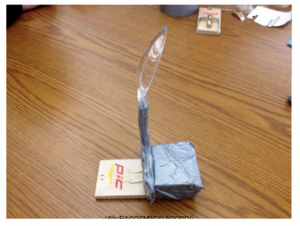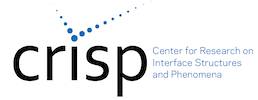Our kits are currently being reviewed and updated by a team of collaborative, innovative and interdisciplinary educators who wish to enhance the educational opportunities for students. These dedicated teachers are members of CRISP Collaborative Science for All (CCSA) as well as local educators.
Click to see the SCSU CRISP Module Template used by CCSA for improving and updating the CRISP demos and kits. Each kit page offers a CRISP developed teacher module and CRISP aligned standards (both NGSS and CCSS)
Kit Request form

Created by CRISP via the 2016 Materials and Manufacturing Summer Teacher Institute
Subject(s):
Engineering, Measurement, Mechanics
Objectives:
Students will….
Design and construct a catapult built to design specifications using limited materials provided.
Go through the engineering design process to refine and improve their catapult design.
Materials in this kit:
- Duct tape
- Plastic Spoon
- Wooden Spoon
- Metal Spoon
- 2 Plastic Knives
- 8 Erasers (1”x2”)
- Mousetrap
- Hot glue Gun
- Marshmallows (Small)
Suggestions for the Teacher:
Students should have prior knowledge of the following:
Forces
Potential and Kinetic Energy
Angles
Procedure Writing
Measurement
Sequential Thinking
Safety:
Students should use caution when working with the mouse traps and hot glue gun
Additional Resources:
Mousetrap Catapult teacher module
Mousetrap Catapult CRISP aligned standards
http://www.instructables.com/id/MouseTrap
STEM Careers:
Field Artillery Officer
Mechanical Engineer
Mathematical Scientist
Civil Engineer
Standards:
MS-ETS1-1. Engineering Design
- Define the criteria and constraints of a design problem with sufficient precision to ensure a successful solution, taking into account relevant scientific principles and potential impacts on people and the natural environment that may limit possible solutions.
MS-PS3-2 Energy
- Develop a model to describe that when the arrangement of objects interacting at a distance changes, different amounts of potential energy are stored in the system.
PS3.A: Definitions of Energy
- A system of objects may also contain stored (potential) energy, depending on their relative positions.
PS3.C: Relationship Between Energy and Forces
- When two objects interact, each one exerts a force on the other that can cause energy to be transferred to or from the object.
MS - ETS1.A: Defining and Delimiting Engineering Problems
- The more precisely a design task’s criteria and constraints can be defined, the more likely it is that the designed solution will be successful. Specification of constraints includes consideration of scientific principles and other relevant knowledge that are likely to limit possible solutions.
ETS1.B: Developing Possible Solutions
- Analyze data from tests to determine similarities and differences among several design solutions to identify the best characteristics of each that can be combined into a new solution to better meet the criteria for success.
- Develop a model to generate data for iterative testing and modification of a proposed object, tool, or process such that an optimal design can be achieved.
Systems and System Models
- Models can be used to represent systems and their interactions – such as inputs, processes, and outputs – and energy and matter flows within systems.
Interdependence of Science, Engineering, and Technology
- All human activity draws on natural resources and has both short and long-term consequences, positive as well as negative, for the health of people and the natural environment. (MS)
- The uses of technologies and limitations on their use are driven by individual or societal needs, desires, and values; by the findings of scientific research; and by differences in such factors as climate, natural resources, and economic conditions. (MS)
- New technologies can have deep impacts on society and the environment, including some that were not anticipated. Analysis of costs and benefits is a critical aspect of decisions about technology. (HS)
SEP 2 – Developing and Using Models
- Develop a model to describe unobservable mechanisms.
